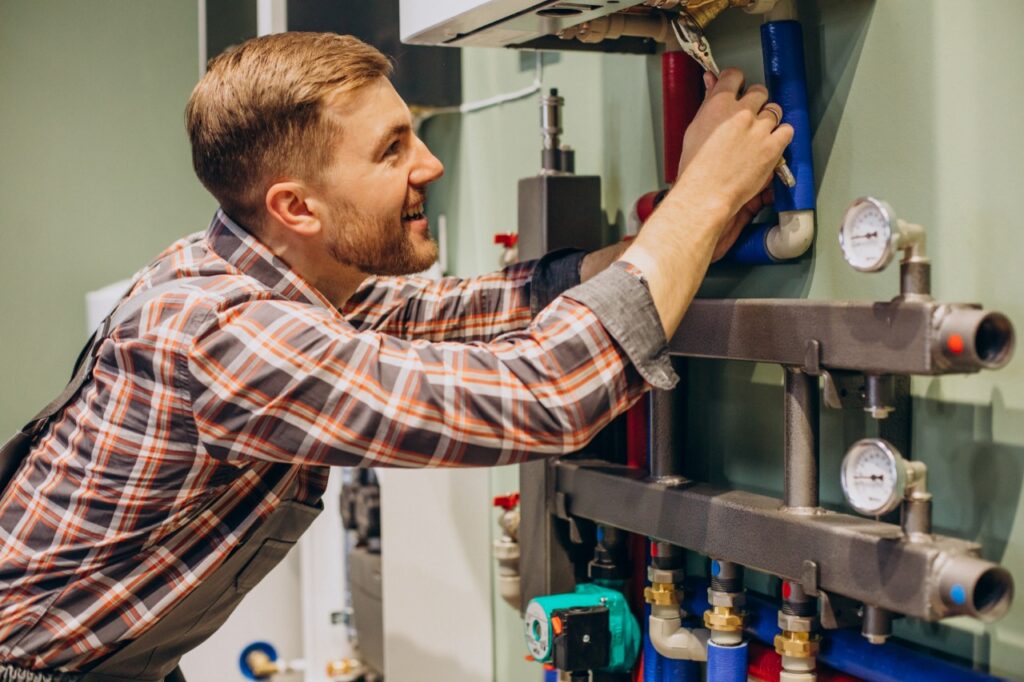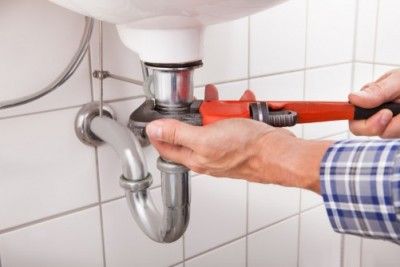The Core Parts of Your Home's Plumbing System
The Core Parts of Your Home's Plumbing System
Blog Article
Are you trying to locate critical information about Plumbing Installation 101: All You Need to Know?

Understanding how your home's pipes system functions is important for every single house owner. From delivering tidy water for alcohol consumption, cooking, and bathing to securely removing wastewater, a well-kept plumbing system is critical for your family's health and convenience. In this thorough guide, we'll explore the intricate network that makes up your home's pipes and deal ideas on maintenance, upgrades, and dealing with common issues.
Introduction
Your home's pipes system is greater than simply a network of pipes; it's a complex system that guarantees you have accessibility to tidy water and reliable wastewater elimination. Understanding its components and how they interact can assist you avoid costly repair services and make certain whatever runs smoothly.
Standard Parts of a Plumbing System
Pipelines and Tubes
At the heart of your plumbing system are the pipes and tubing that lug water throughout your home. These can be constructed from different materials such as copper, PVC, or PEX, each with its benefits in terms of resilience and cost-effectiveness.
Components: Sinks, Toilets, Showers, and so on.
Components like sinks, commodes, showers, and tubs are where water is used in your house. Comprehending just how these components connect to the pipes system helps in identifying troubles and planning upgrades.
Shutoffs and Shut-off Points
Valves regulate the flow of water in your plumbing system. Shut-off valves are important during emergencies or when you require to make repair services, allowing you to separate parts of the system without disrupting water flow to the whole home.
Supply Of Water System
Key Water Line
The primary water line connects your home to the local water supply or an exclusive well. It's where water enters your home and is dispersed to numerous fixtures.
Water Meter and Pressure Regulatory Authority
The water meter measures your water usage, while a stress regulatory authority ensures that water streams at a secure stress throughout your home's plumbing system, stopping damages to pipelines and fixtures.
Cold Water vs. Hot Water Lines
Comprehending the difference between cold water lines, which provide water directly from the major, and hot water lines, which lug heated water from the hot water heater, aids in fixing and preparing for upgrades.
Water drainage System
Drain Pipes Pipes and Traps
Drain pipes lug wastewater away from sinks, showers, and bathrooms to the sewage system or septic tank. Traps avoid sewage system gases from entering your home and also trap particles that can cause blockages.
Air flow Pipes
Ventilation pipelines permit air into the drainage system, stopping suction that can slow drain and trigger traps to vacant. Correct ventilation is vital for keeping the honesty of your plumbing system.
Significance of Appropriate Water Drainage
Ensuring appropriate water drainage protects against backups and water damage. On a regular basis cleaning up drains pipes and keeping catches can avoid expensive repair services and prolong the life of your pipes system.
Water Furnace
Sorts Of Hot Water Heater
Hot water heater can be tankless or traditional tank-style. Tankless heating systems heat water on demand, while tanks store heated water for instant usage.
Upgrading Your Plumbing System
Reasons for Upgrading
Upgrading to water-efficient fixtures or replacing old pipes can improve water quality, decrease water expenses, and enhance the value of your home.
Modern Plumbing Technologies and Their Benefits
Explore technologies like smart leak detectors, water-saving commodes, and energy-efficient hot water heater that can conserve cash and minimize ecological effect.
Expense Factors To Consider and ROI
Determine the in advance expenses versus long-lasting cost savings when considering pipes upgrades. Several upgrades spend for themselves via minimized energy costs and less fixings.
Just How Water Heaters Link to the Plumbing System
Comprehending how water heaters attach to both the cold water supply and warm water circulation lines assists in identifying issues like insufficient hot water or leakages.
Maintenance Tips for Water Heaters
Regularly purging your hot water heater to remove debris, inspecting the temperature settings, and inspecting for leakages can prolong its life expectancy and improve power performance.
Typical Pipes Concerns
Leakages and Their Causes
Leaks can occur as a result of maturing pipes, loose installations, or high water stress. Dealing with leaks without delay stops water damage and mold and mildew development.
Clogs and Clogs
Clogs in drains and toilets are commonly caused by purging non-flushable items or a build-up of oil and hair. Using drainpipe screens and being mindful of what drops your drains can protect against blockages.
Signs of Plumbing Troubles to Look For
Low tide pressure, slow-moving drains, foul odors, or abnormally high water bills are indicators of potential pipes issues that should be attended to promptly.
Pipes Maintenance Tips
Normal Evaluations and Checks
Set up annual pipes evaluations to capture concerns early. Search for indicators of leaks, deterioration, or mineral accumulation in taps and showerheads.
DIY Upkeep Tasks
Straightforward tasks like cleansing faucet aerators, looking for bathroom leaks utilizing color tablets, or shielding exposed pipes in chilly environments can avoid significant plumbing problems.
When to Call a Specialist Plumbing Technician
Know when a pipes issue needs expert expertise. Trying intricate repairs without appropriate expertise can result in even more damages and greater repair expenses.
Tips for Lowering Water Usage
Easy behaviors like dealing with leaks quickly, taking much shorter showers, and running full lots of laundry and dishes can save water and reduced your energy costs.
Eco-Friendly Pipes Options
Consider sustainable pipes products like bamboo for flooring, which is durable and environmentally friendly, or recycled glass for counter tops.
Emergency situation Readiness
Steps to Take Throughout a Pipes Emergency situation
Know where your shut-off shutoffs are located and how to shut off the water system in case of a ruptured pipe or significant leakage.
Relevance of Having Emergency Contacts Useful
Maintain call details for neighborhood plumbers or emergency services easily available for quick reaction during a plumbing dilemma.
Environmental Impact and Conservation
Water-Saving Components and Devices
Mounting low-flow taps, showerheads, and commodes can significantly reduce water usage without sacrificing performance.
DIY Emergency Situation Fixes (When Appropriate).
Temporary fixes like making use of air duct tape to patch a dripping pipeline or positioning a bucket under a dripping tap can decrease damages till a specialist plumbing professional gets here.
Verdict.
Comprehending the composition of your home's plumbing system encourages you to keep it properly, conserving money and time on repair work. By adhering to regular maintenance regimens and remaining educated regarding contemporary plumbing technologies, you can guarantee your pipes system runs effectively for years ahead.
HOW YOUR PLUMBING SYSTEM WORKS
Which Pipes Do What?
Blue lines = fresh water supply entering the building Red lines = hot water supply entering the building Grey lines = pipes carrying waste away from the building and venting pipes carrying gases away from the building (through the roof) YOUR MAIN PLUMBING SYSTEMS
There are two main plumbing systems that support your home s basic plumbing needs one that brings clean water into your home, and one that sends dirty water away from your home. Connected to the toilet, bath, shower, and other faucets in your home, these two systems keep your water flowing in the right directions.
ACCESSING FRESH WATER
Fresh and clean water is brought into your home through the main water supply line . Filtered through one pipe, this water is pressured to flow into the various fixtures in your home at any given time.
This water can be sourced from a well located on your property, a pond or river (mostly cottages), or, as in most cases, from the city s municipal water treatment centre. However, it is important to note that water that is untreated, such as the water siphoned from ponds or rivers, may not be safe to drink. Personal water supplies always need to be treated for hardness and contaminants before consumed.
MUNICIPAL WATER SUPPLIES
Improve taste and odour Remove sediment Eliminate hardness Reduce chlorine COLD WATER SUPPLY VS. HOT WATER SUPPLY
Cold water flows into your home or building through the service line, which then distributes hot or cold water to your fixtures. This line is most commonly run through a central column that runs floor to floor. Hot water runs in short and straight pipes as the longer the pipeline, the more heat that will be lost in the transfer. Having shorter pipes also allows residents to access hot water more quickly.
WASTE WATER SYSTEM
Your wastewater system is divided into two parts pipes that send wastewater away from your home and venting pipes that send sewer gas away from your home. Sewage water travels through pipes that flush the water and waste towards local sewers that are operated and managed by your city or town. Most sewer systems rely on gravity to move the wastewater to where it needs to go.
The further away from your toilet or sink, the larger wastewater pipes become. This allows for waste to be disposed of from various parts of your home or business at once without pipe blockages. The angle and flow of these pipes are also essential for keeping your waste pipes clear of build up.
https://harrisplumbing.ca/how-your-home-plumbing-system-works/

I hope you liked our topic on Plumbing Installation 101: All You Need to Know. Thanks for spending some time to read through our article post. Be sure to pause to promote this post if you enjoyed reading it. Thanks a bunch for being here. Return soon.
Call Today Report this page